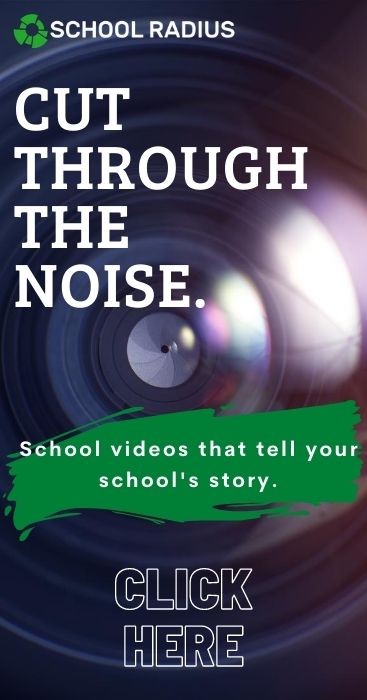As public school districts and private schools across the country grapple with whether – and how – to open schools for in-person instruction, many parents aren’t sure themselves what they are comfortable with. The information out there is conflicting. Is it safe for schools to reopen? The answer to this question depends on many variables unique to each location and each school or district’s ability to implement safety procedures.
If your school has determined that it will reopen for in-person instruction in the fall, that’s great. You’ve made this decision while weighing the pros and cons and keeping in mind the best interests of the community, and many parents will be breathing a sigh of relief. But you’ve got a public relations challenge ahead of you.
While many parents and students want to return to the building in the fall, everyone is apprehensive.
Is reopening the right decision?
What will the implications be?
How will things be different?
The way you approach reopening can go a long way towards making your families feel secure. We’ve got some suggestions for how calm parents’ fears and give them the confidence to send their children to school for in-person instruction.
Here are five suggestions for how to make parents feel safe and secure in sending their kids to school this fall.
1. Be Transparent
Don’t pretend to have all the answers or a crystal ball. We don’t know what the fall, winter, or spring will bring. Be up-front about what you know and what you don’t know. Complete transparency will win hearts and minds, keeping parents secure in the knowledge that they know everything you know and that you will continue to keep them informed to the best of your ability.
Honesty is absolutely paramount here.
2. Spell It Out
Parents who are nervous about their kids being in a classroom this fall are naturally going to have a lot of questions. You can save yourself time and win their confidence if you’ve got many of their questions answered from the get-go. Create a detailed plan that you can release to the community, explaining the school’s reasoning for reopening, and the commitments you are making to keeping the school clean and children safe.
Strive to answer as many questions as possible preemptively: Prepare an FAQ or an informational graphic detailing all the measures and policies you will put in place.
For inspiration, take a look at this comprehensive plan by The Village School of Naples, complete with graphics, explaining how it plans to reopen in the fall. Here’s another one from one of our clients, East Chicago Urban Enterprise Academy.
Principals at Saigon South International School in Vietnam made videos for their elementary and middle school students, walking them through what to expect when they returned to school in May to finish out the 2019-20 school year. The school also clearly outlined its approach to disease prevention and the measures it was taking to achieve that goal and published a post with photographs showing, for example, a high school student disinfecting his desk upon entering the classroom.
Be detailed and thorough but concise and matter-of-fact.
3. Rely on Experts
You’re the education experts, and parents look to you for that guidance. But you’re not health and hygiene experts, so don’t pretend to be. Where possible, cite authoritative sources in the position to know about the health and safety situation in your community. Some examples might include your local or state health departments or professional medical associations.
The American Academy of Pediatrics released a statement in tandem with the American Federation of Teachers, the National Education Association, and The School Superintendents Association, stating that schools should confer with public health experts, educators, and parents about how and when to reopen schools. Make sure your community is privy to these conversations. You can post summaries of meetings and discussions to facilitate the spread of the information throughout the community.
Khem Irby, a school board member in Greensboro, North Carolina, and president of Parents Across America, told USA Today that schools have to provide parents with peace of mind before they send their children back to the classroom.
“Many of the parents I’ve been speaking with are very clear: They’re not sending their kids back to school unless school districts can come up with a plan they can trust, and it’s consistent,” Irby said. “Unfortunately, many schools out there might not have the money to truly accommodate social distancing and cleaning guidelines.”
Provide parents with data and statistics that inspire confidence and trust.
4. Share Good News
What wins can you share with the community? Perhaps it’s the success of a certain online tool or platform during virtual learning or a goal that was set and achieved at the end of the previous school year. Poll your teachers – do any of them have feel-good anecdotes to share about student creativity and positivity? Did anything go better than expected during online learning? Sharing good news is especially helpful in times of uncertainty, to help everyone stay upbeat and positive.
Set the tone for the year with positivity.
5. Be Flexible
Many public school districts are offering choices to parents. For example, Fairfax County Public Schools in Virginia are proposing a semi-in-school option and a 100-percent virtual option. It can be difficult for parents to commit ahead of time to one option for the entire year, as this is a new situation for everybody. If conditions allow, consider offering a partly virtual option for those families that are really nervous about returning to school full-time.
Being flexible, too, in dealing with unforeseen situations that might arise as the year progresses, will be helpful. We can all use a little grace right now, children most of all. Communicate to parents that administration and staff will continuously monitor the situation in the classroom and are willing to pivot if and when necessary. Smaller schools may have greater flexibility here than larger schools or districts.
Provide as much flexibility as your circumstances allow.
This is a new situation for everyone, and we’re all learning as we go. We hope that these five tips make the transition a little smoother for you and your community. You got this.


![5 Ways to Help Parents Feel Safe and Secure Sending Their Kids to School This Fall [COVID-19]](https://schoolradius.net/wp-content/uploads/2020/07/mother-putting-a-face-mask-on-her-daughter-4261252-min-scaled.jpg)

